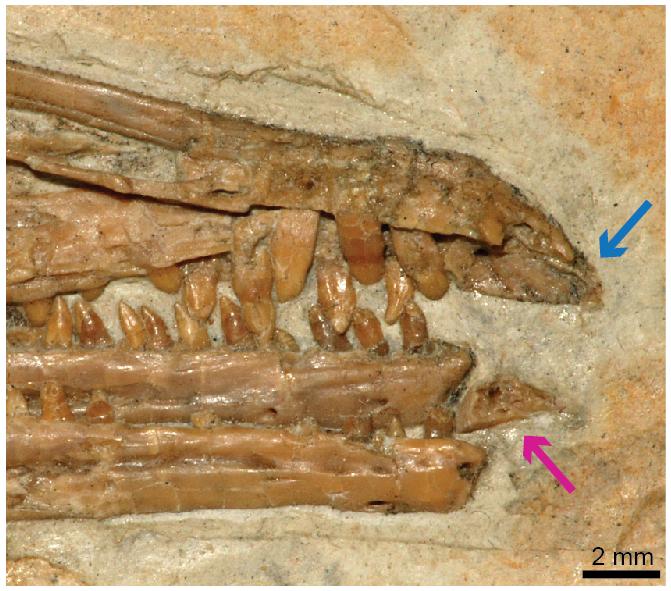
Credit: IVPP
The predentary bone is one of the most enigmatic skeletal elements in avian evolution. Located at the tip of the lower jaw, this bone is absent in more primitive birds and in living birds; it is thought to have been lost during evolution. For over 30 years, the origin and function of the avian predentary has remained mysterious.
Now, however, Alida Bailleul, LI Zhiheng, Jingmai O’Connor and ZHOU Zhonghe from the Institute of Vertebrate Paleontology and Paleoanthropology (IVPP) of the Chinese Academy of Sciences have made significant progress towards solving this long-standing mystery. Their findings were published in Proceedings of the National Academy of Sciences of the United States of America (PNAS) on November 18.
Using a battery of analytical methods, the team, led by Dr. Bailleul, presents strong evidence that the avian predentary was covered by a keratinous beak – a horny sheath that covers the bones of the rostrum in all living birds, all of which are edentulous and have beaks. It also provides evidence the predentary was proprioceptive, i.e., it was able to detect external mechanical stimuli; and was mobile – thus representing a now extinct form of cranial kinesis.
Cranial kinesis occurs when joints are able to move within the skull – mainly between the upper jaw and the braincase. This feature is widespread in living birds; however, it is thought to be mostly absent in Mesozoic birds.
Based on her examination of the fossilized tissues of the predentary and other jaw elements of Yanornis martini from the Jehol Biota, Dr. Bailleul identified a specific type of cartilage inside the joint between the predentary and dentary that strongly suggests some movement between these elements.
The team noticed that the predentary is only found in ornithuromorphs that have teeth. However, the tip of the premaxilla – the bone of the upper bill that would have occluded with the predentary – is without teeth. This suggests that the tip of the upper jaw, like the predentary, was also covered with a keratinous beak.
The tiny beak at the tip of the skull, combined with the sensitive and mobile predentary bone and teeth that were most likely also proprioceptive, represents a unique feeding adaptation that allowed greater dexterity when manipulating food. Although bizarre and now extinct, this unique feeding apparatus persisted in the ornithuromorph clade for at least 58 million years, from the Early to the Late Cretaceous.
Using information from the fossilized tissues and preexisting data on the embryology of living birds, the team also formulated a hypothesis regarding the origin of this bone, suggesting it is a sesamoid, similar to the human knee cap. Identification as a sesamoid means this bone is a novel skeletal innovation unique to one lineage of ornithuromorphs, and that it did not arise from a preexisting skull bone.
Although additional research on fossils birds (and also extant birds) is required to confirm some of these hypotheses, the predentary is such a small bone that it is only rarely preserved, thus making it very difficult – if not impossible – to find specimens that can shed light on the remaining pieces of this mystery.
###
Media Contact
Alida M. Bailleul
[email protected]
Related Journal Article
http://dx.




